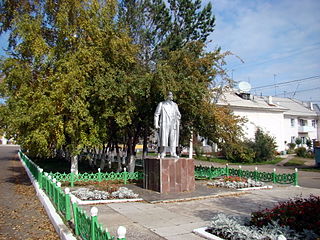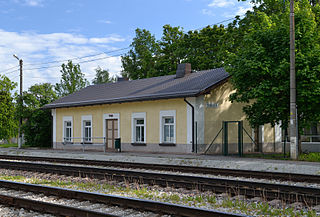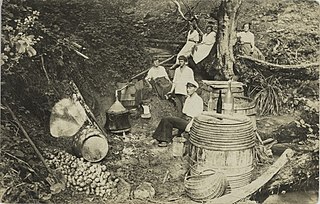Related Research Articles

Haapsalu is a seaside resort town located on the west coast of Estonia. It is the administrative centre of Lääne County, and on 1 January 2020 it had a population of 9,375.

Kohtla-Järve is a city and municipality in northeastern Estonia, founded in 1924 and incorporated as a town in 1946. The city is highly industrial, and is both a processor of oil shales and is a large producer of various petrochemical products. During the 1944–1991 Soviet occupation, large numbers of immigrant workers from Russia and other parts of the former USSR were brought in to populate the rapidly growing city. The population in the Kohtla-Järve area which had been, as of 1934 census, over 90% ethnic Estonian, became overwhelmingly non-Estonian in the second half of the 20th century. According to more recent data 21% of the city's population are ethnic Estonians; most of the rest are Russians. Kohtla-Järve is the fifth-largest city in Estonia in terms of population.
Postimees is an Estonian daily newspaper established on 5 June 1857, by Johann Voldemar Jannsen. In 1891, it became the first daily newspaper in Estonia. Its current editor-in-chief is Priit Hõbemägi. The paper has approximately 250 employees.

Lesosibirsk is a town in Krasnoyarsk Krai, Russia, located on the Yenisei River. Population: 61,139 (2010 Census); 65,374 (2002 Census); 68,349 (1989 Soviet census).

Borodino is a town in Krasnoyarsk Krai, Russia, located 186 kilometers (116 mi) northeast of Krasnoyarsk, the administrative center of the krai. Population: 17,416 (2010 Census); 19,181 (2002 Census); 18,426 (1989 Soviet census).

Tamsalu is a town in Tapa Parish, Lääne-Viru County, Estonia.
Estonia is a unitary country with a single-tier local government system. Local affairs are managed autonomously by local governments.
The Nomenclature of Territorial Units for Statistics (NUTS) is a geocode standard for referencing the subdivisions of Estonia for statistical purposes. The standard is developed and regulated by the European Union. The NUTS standard is instrumental in delivering the European Union's Structural Funds. The NUTS code for Estonia is EE and a hierarchy of three levels is established by Eurostat. Below these is a further levels of geographic organisation - the local administrative unit (LAU). In Estonia, the LAU 1 is counties and the LAU 2 are municipalities.
Ellakvere is a village in Jõgeva Parish, Jõgeva County in eastern Estonia. The village is known for the garlic grown there.

Raul Rebane is an Estonian journalist and communication consultant.
Munasaar is a rocky island belonging to the Baltic country of Estonia. Munasaar is located in the Viru-Nigula Parish, which is part of the Lääne-Viru County, one of the 15 counties of Estonia. Seabirds have been reported to frequently nest on the island.

Estonians in Abkhazia are a minority residing in Abkhazia, recognized worldwide as an autonomous region of Georgia but de facto an independent country. Estonians began to emigrate to Abkhazia when the region became part of the Russian Empire and many Abkhazians left or were expelled. The tsarist regime began to repopulate the area with its Christian subjects, including Estonians. There were numerous waves of migration from Estonia to Abkhazia, where the peasants were promised land. Among others, they founded the villages of Sulevi and Salme in the west and Alam-Linda, Ülem-Linda and Estonka near Sukhumi. In the villages, the Estonians also had their own schools.

Jaan Kalviste was an Estonian chemist, mineralogist, educator, and translator.
Events from the year 2020 in Estonia

Alam-Linda, meaning 'Upper-Linda' or Kummi küla is a village in Abkhazia, Georgia.

Beer has been brewed in Estonia for over a thousand years. The first written reference to beer in what is now Estonia dates to 1284. In Estonian, beers are often described as hele (pale) or tume (dark).

Voldemar Karl Koht VR II/3 was an Estonian soldier and commander of the Estonian Armored Train Regiment.

Vadim Vladimirovich Shtepa is a Russian philosopher, publicist, poet and analyst of Russian regions. Since 2015, he lives in Estonia, where he publishes analytical articles on Russian regions and politics.

Teet Veispak is an Estonian historian and cultural figure.
Estonia or sometimes Estonka, is a village in Abkhazia, Georgia by the river Kodori.